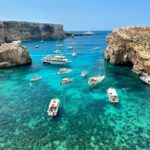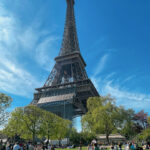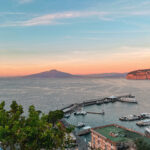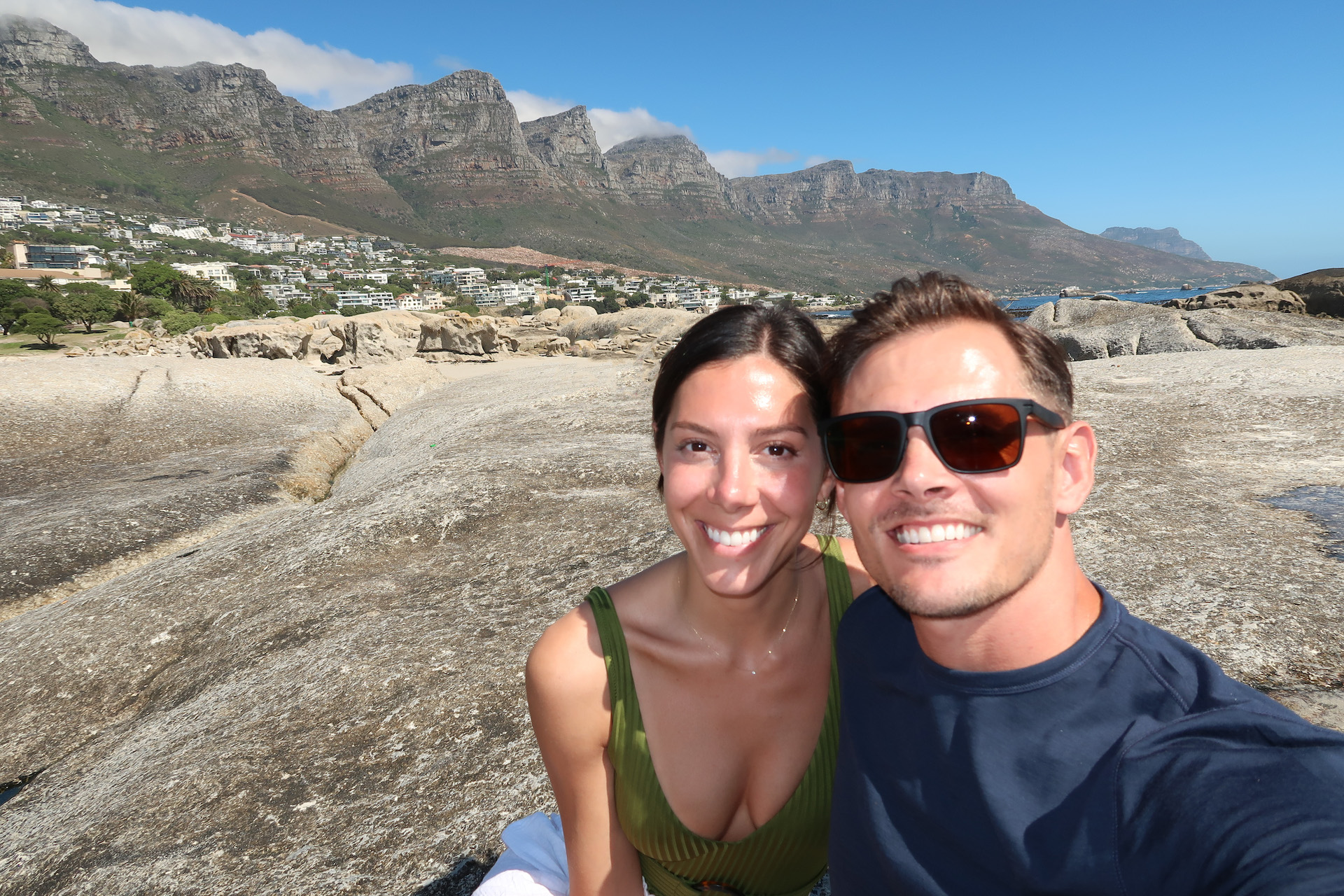
About Cape Town:
Cape Town is a popular coastal city located at the southern tip of South Africa. It is known for its stunning beaches, natural landscapes, diverse culture, and vibrant nightlife. It was first inhabited by the indigenous Khoisan people that continue to live in the area today. European explorers arrived in the late 15th century. By the 17th century, the Dutch arrived and used Cape Town as a trading post along their route to the East Indies. The British took control of Cape Town in 1795, before returning it to Dutch rule in 1803. The colony was eventually ceded to the British in 1806, and remained a British colony until the establishment of the Union of South Africa in 1910. South Africa only became a Republic in May 1961. Still today, this city is one of the most fascinating on the continent!



Best Time To Visit:
The best time to visit and enjoy warm, sunny days with temperatures ranging from 60°F to 90°F is in January and February. March is also a great month for ideal temperatures and fewer crowds. June and July are generally the coldest months and have significant rainfall.
Visa Requirements:
U.S. citizens visiting the Republic of South Africa for 90 days or less for tourism purposes do not require a visa.
Language:
South Africans speak a wide range of languages, but the most common is English, followed by Afrikaans and Xhosa.
Currency: South African Rand
As of this writing, 1 USD is equivalent to 19.26 ZAR, meaning your dollar goes REAL far here!
Getting Around:
The best way to travel around Cape Town is by Uber or car rental.
If you plan to only travel a short distance, then Uber is the most cost-effective mode of transportation. However, renting a car is necessary if you’re seeking to visit the main attractions beyond the city (i.e. Stellenbosch, Cape Point, Chapman’s Peak).
Helpful Tip: Cars drive on the left hand side so it may take a bit of an adjustment.

Where To Stay:
Many hotels and accommodations are centered around the beach or V&A Waterfront. Personally, I would not recommend accommodations near the V&A Waterfront because of how congested and touristy the area can become. If you’re looking for more of a relaxing location with gorgeous beachside views, then I suggest staying in the neighborhood of Camps Bay, Sea Point, or Green Point.

Camp’s Bay Hotels:
The Marly: Five star boutique hotel located in the heart of Camp’s Bay with panoramic views of Table Mountain, Lion’s Head and Camp’s Bay Beach.
PODS Camp’s Bay Boutique Hotel: contemporary rooms located on Camp’s Bay strip with a pool and beach service.
12 Apostles Hotel & Spa: remote hotel in Camp’s Bay with an award-winning spa and multiple restaurants and an old-school, antique vibe.
Other Top Hotels:
Sea Point: The Winchester Boutique Hotel, Pineapple House
Green Point: O’Two Boutique Hotel, One&Only Cape Town (Luxury)
Hout Bay: Tintswalo Atlantic (Luxury)
V&A Waterfront: Silo Hotel, Queen Victoria Hotel
Where To Eat:
A major highlight of visiting South Africa is how far your dollar goes. Aside from the amazing attractions, you will have an opportunity to taste some of the best food on the continent at an affordable price… So order it all 🙂
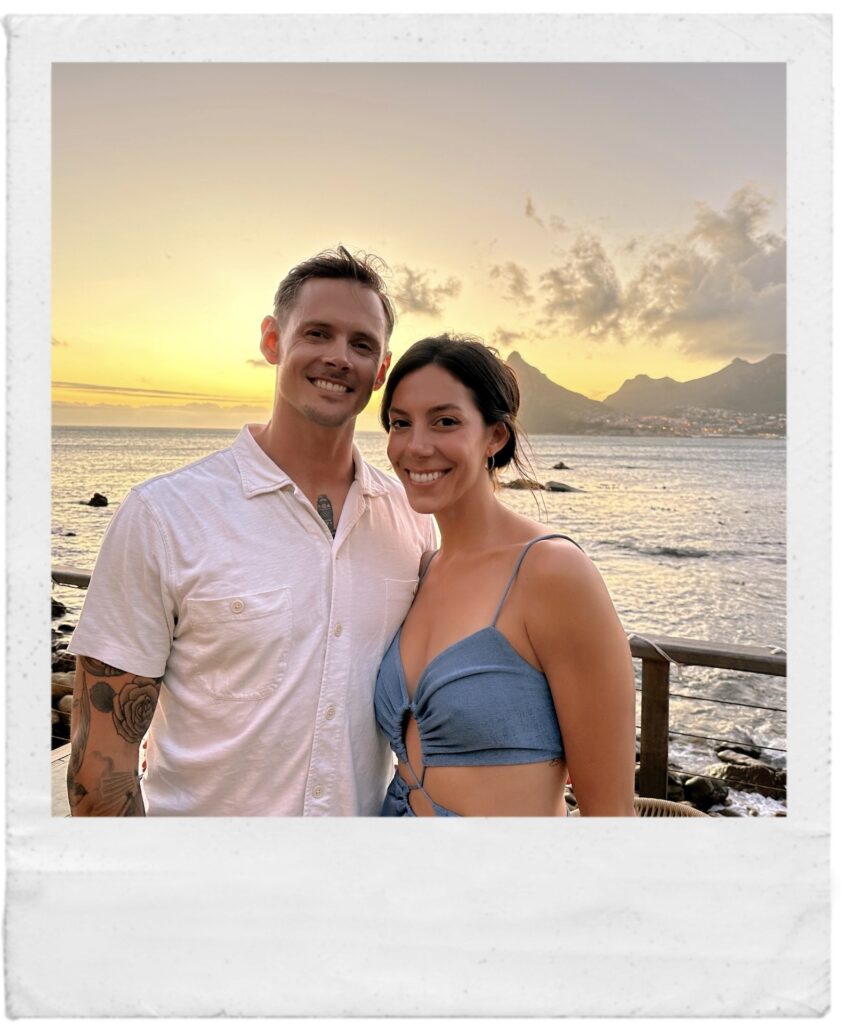

Lunch:
Nourish’d: plant-based cafe and juicery serving delicious smoothies and açaí bowls amongst multiple locations around Cape Town.
Giovannis: Italian deli in Green Point serving delicious New York style deli meats on fresh bread
Dinner:
The Pot Luck Club: located on the top floor of an old biscuit mill, this restaurant serves tapas style plates with unique flavors and bomb cocktails. It’s open for both lunch and dinner, and is an absolute must.
Fyn: located on the rooftop of the historic Speakers’ Corner building with views of Table Mountain and Lion’s Head. The menu is Japanese inspired with South African accents.
Chefs Warehouse at Tintswalo Atlantic: situated along Chapman’s Peak Drive in Hout Bay. This hidden gem offers a pre-fixe, multi-course chef’s tasting menu. Make a reservation around sunset and admire the gorgeous view of the Atlantic Ocean hitting into the cliffs of Chapman’s Peak. Bring a jacket as the wind can pick up!
La Colombe; PIER: multi-course, fine-dining experience with a seafood inspired menu.
Bao Down: Japanese fusion served tapas style by the former head chef at Chefs Warehouse. With its ongoing growing popularity, reservations have been difficult to make.
Kloof Street House: restaurant and bar nestled in a old Victorian home with a beautiful outdoor garden on Kloof Street.
Karibu Restaurant: South African dining experience with local flavors with views of Table Mountain on the harbor of the V&A Waterfront.
Tjing Tjing: Japanese restaurant, lounge, and rooftop bar located in a 200-year-old house in downtown Cape Town.
Willoughby & Co: fusion style Japanese cuisine in the heart of the V&A Waterfront.
Drinks:
Chinchilla: rooftop bar in Camps Bay serving speciality cocktails; make a reservation for sunset!
Athletic Club and Social: three-story sophisticated bar and Mediterranean-inspired restaurant.
Cause Effect Cocktail Kitchen: bar serving experimental cocktails and vintage drinks.
Village Idiot: vintage bar and restaurant with an open air balcony popular amongst locals.
Grand Africa Cafe & Beach: upscale beach bar and restaurant near the V&A Waterfront – perfect for brunch or an afternoon cocktail.
What To Do:
Cape Town has numerous attractions within the city and just a short drive beyond. If you choose to keep your days here busy, you will find plenty of things to do! Here’s a list of some of the top attractions:
1. Kirstenbosch National Botanical Garden:
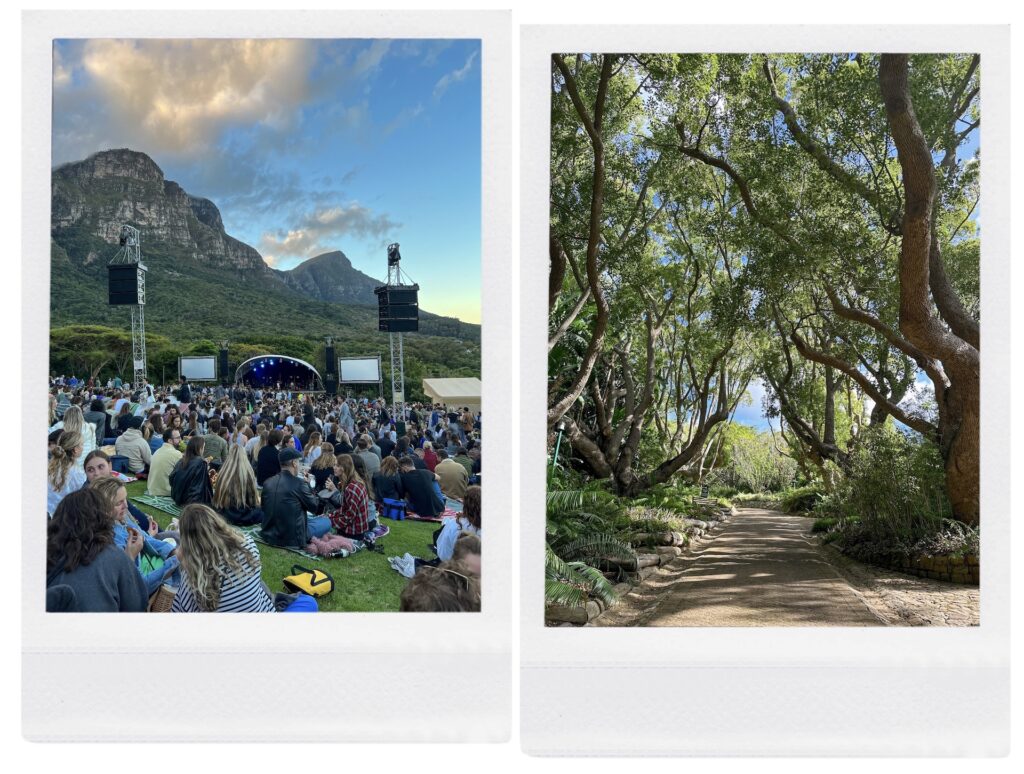
The Kirstenbosch Botanical Garden is one of my favorite places in Cape Town, and one of most magnificent and unique gardens in the world. Situated on the eastern side of Table Mountain, a 20 minute drive from downtown, it is home to a diverse collection of African plants, including rare and endangered species. The grounds are quite large so you can opt for a free, guided tour or meander at your own leisure. During the summer, bring a bottle of wine and enjoy live concerts held on its giant lawn. The venue is undeniably spectacular, with its stunning backdrop of Table Mountain.
2. Take the Cable Car to Table Mountain (or Hike):

This five minute cable car ride to the top of Table Mountain is one of Cape Town’s most popular tourist attractions. Table Mountain’s flat-topped surface is one of the seven natural wonders of the world. I can’t stress this enough – get there in the early morning and avoid weekends, or you’ll find yourself waiting 1.5 to 2 hours to get to the top. You can order tickets in advance, but the “time slots” are not guaranteed. If you opt for hiking it, the trek can take anywhere from 1.5 to 2 hours.
2. Hike Lion’s Head:

One of the more popular hikes in Cape Town is Lion’s Head. The hike is relatively short (45 minutes to 1 hour) and moderately difficult, but so rewarding at the top! The path can become congested during summer months, especially during sunset and on weekends, but not to the extent of Table Mountain.
4. Victoria & Alfred (V&A) Waterfront:
V&A Waterfront is a harbor built in the late 19th century by Queen Victoria’s second son, Alfred, as a stopping point for Europeans ships for centuries. Today the harbor is home to numerous attractions, such as its popular ferris wheel or Two Oceans Aquarium, shopping venues, hotels and restaurants. The area has become a tourist hotspot!
5. Bo Kaap:


This spot is a tough one for me to add, but because many people have had a positive experience I decided to include it. Bo Kaap was once known as the Malay Quarter during a former racially segregated time in Cape Town. The residents of Bo-Kaap are the descendants of “Cape Malays,” or the slaves brought by Dutch settlers from both Southeast Asian and African countries. Today, the colorful and vibrant buildings dating back to 18th century remain the home of the Muslim community of Cape Town. The Bo-Kaap Museum showcases local Islamic culture and heritage in one of the oldest homes built in the area. Unfortunately during my time exploring Bo Kaap, my husband and I were robbed at knifepoint in broad daylight. South Africa has one of the highest crime rates in the world, so please always pay attention and be aware of your surroundings, even in daylight hours surrounded by other people.
6. Robben Island:
From the V&A Waterfront, you can take a one hour ferry ride to visit Robben Island. The island served as a penal colony for both the Dutch and British. It also housed a leper colony from 1846 to 1931, and from the mid-1960s to 1991, it was South Africa’s maximum-security prison. This is where Nelson Mandela was famously imprisoned for 27 years of his life. The prison was closed in the early 1990s and eventually, in 1997, it was transformed into a museum that pays tribute to the life of Mandela.
7. Shark Cage Diving in Gainsbaii:

First off – it is very safe and not as scary as you think! Gainsbaii is about a two hour drive southeast of Cape Town and is home to Kleinbaai Harbour: ”The Great White Shark Capital of the World.” There are many companies offering you the chance to swim with sharks. We chose to go with White Shark Project and loved our experience. Transportation from Cape Town to Gainsbaii begins in the early morning. You will be driven to the company’s facility where you’ll be briefed on the dive. You’ll then take a short boat ride out to sea where cage is submerged under water. You’ll toss on a wet-suit and goggles and hop into the large cage with your group. The team will throw “chum” into the water to draw in sharks. When an incoming shark approaches the cage, the guide direct you to dive under water and you’ll get a stunning view of these magnificent creatures. The adventure will take up most of your day, but is definitely worth the once in-a-lifetime opportunity.
Helpful Tip: The water is FREEZING, so bring a change of dry clothes to stay warm.
8. Helicopter Tour
Several companies offer scenic helicopter flights of Cape Town with comparable pricing based on the length of the trip. It’s an amazing way to see the city’s beautiful and natural landscape. It’s not a great option for all budgets, but is an undeniably cool experience.
9. Drive Chapman’s Peak
Another highlight of Cape Town is driving along one of the top scenic highways in the world, Chapman’s Peak. It’s so breath-taking that you’ll have to pull off the side of the road several times to absorb the beauty of your surroundings. This highway will lead you to the popular, Boulders Beach (penguins!) and Cape Point.
10. Visit the Penguins at Boulders Beach
Continue your drive along Chapman’s Peak to Boulders Beach. This beach is named after its large granite boulders scattered around its shore, but is popular due to its native colony of endangered African Penguins. The penguins have become accustomed to the frequent visitors and go about waddling their way around the beach.

11. Cape Point
Cape Point is located in the Cape of Good Hope Nature Reserve and marks the southwest tip of the African continent with some of the most breath-taking ocean views. At this exact spot, the cold water of the Atlantic Ocean collides with the warm water of the Indian Ocean. Within the Cape of Good Hope are shipwreck sites perfect for diving, hiking trails and grounds for animal watching (i.e. baboons and ostriches). You can hop on the “Flying Dutchman” railway to overlook the Cape Point Lighthouse and admire gorgeous cliffside views of the landscape.
12. Cape Winelands

I definitely recommend staying in the Cape Winelands overnight, but if you’re limited by time, then a day trip to Stellenbosch or Francshhoek is a must. The drive averages around 1.5 hours depending on traffic. One way to explore multiple estates is to use the Francshooek Wine Tram. You choose between ten different lines, each showcasing a separate part of the Franschhoek Valley. The tram offers a Hop-on Hop-off experience, giving guests more flexibility of timing at each estate. Don’t miss the best estate: Babylonstoren!
13. Hit the Beaches

Clifton Beaches 1-4: These beaches consist of four coves separated by giant boulders that protect their shores from the heavy winds. Clifton Beach is located in a wealthy and affluent area of Cape Town just minutes away from the city center. The beach welcomes locals and tourists, but because of its popularity, parking is tough!
Camps Bay Beach: A crescent-shaped beach located just down the road from Clifton. The palm tree-lined streets are filled with restaurants and small shops. From the beach, you can look back and admire the Twelve Apostles – mountain range with 18 peaks, including Mountain, that stretches south to Hout Bay.
Muizenberg: This beach is usually recognized by its colorful Victorian beach huts. The beach is popular amongst families and dog walkers. It’s also one of the best beaches in Cape Town to surf and take lessons.


